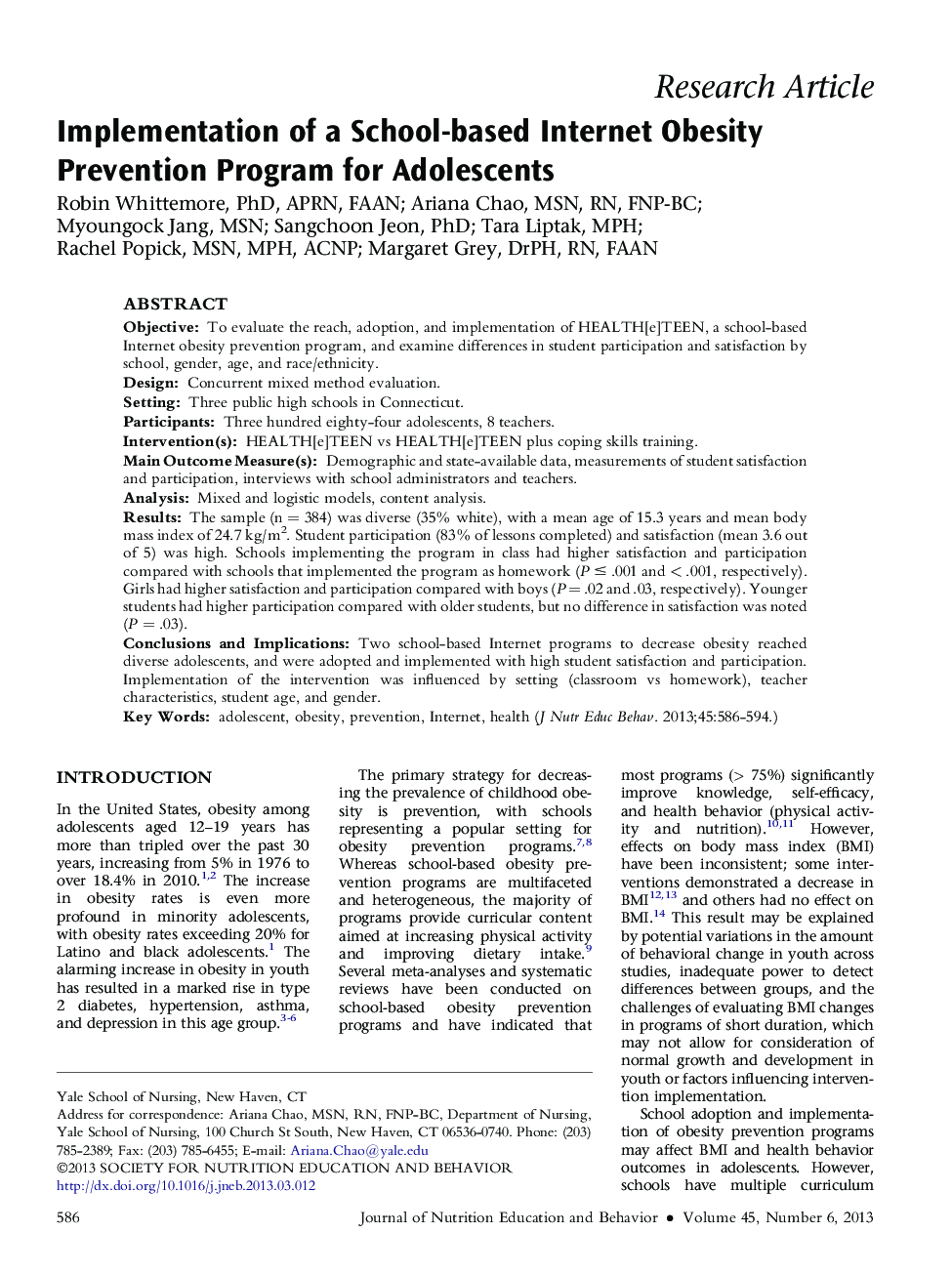| Article ID | Journal | Published Year | Pages | File Type |
|---|---|---|---|---|
| 362003 | Journal of Nutrition Education and Behavior | 2013 | 9 Pages |
ObjectiveTo evaluate the reach, adoption, and implementation of HEALTH[e]TEEN, a school-based Internet obesity prevention program, and examine differences in student participation and satisfaction by school, gender, age, and race/ethnicity.DesignConcurrent mixed method evaluation.SettingThree public high schools in Connecticut.ParticipantsThree hundred eighty-four adolescents, 8 teachers.Intervention(s)HEALTH[e]TEEN vs HEALTH[e]TEEN plus coping skills training.Main Outcome Measure(s)Demographic and state-available data, measurements of student satisfaction and participation, interviews with school administrators and teachers.AnalysisMixed and logistic models, content analysis.ResultsThe sample (n = 384) was diverse (35% white), with a mean age of 15.3 years and mean body mass index of 24.7 kg/m2. Student participation (83% of lessons completed) and satisfaction (mean 3.6 out of 5) was high. Schools implementing the program in class had higher satisfaction and participation compared with schools that implemented the program as homework (P ≤ .001 and < .001, respectively). Girls had higher satisfaction and participation compared with boys (P = .02 and .03, respectively). Younger students had higher participation compared with older students, but no difference in satisfaction was noted (P = .03).Conclusions and ImplicationsTwo school-based Internet programs to decrease obesity reached diverse adolescents, and were adopted and implemented with high student satisfaction and participation. Implementation of the intervention was influenced by setting (classroom vs homework), teacher characteristics, student age, and gender.
